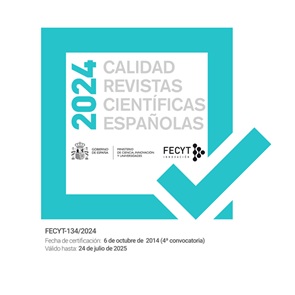WITTGENSTEIN´S METAPHYSICS OF THE INNER AND THE OUTER
Resumen
In the very same manuscript in which Wittgenstein, in the last two years of his life, writes about colours and about certainty, he also writes about the concepts of the inner and the outer, the other minds problems and the problem of pretending. The latter remarks, although very original, are still unpublished; in this article they are examined in detail. The thesis defended is that Wittgenstein carries out a radical reversal of the traditional picture of our knowledge of other minds according to which the uncertainty and unpredictability of the outer has to be explained by the inner. Wittgenstein wants to give an analysis of our knowledge of other minds which goes beyond the distinction between the inner and outer. The uncertainty and unpredictability is a consequence of the fact that our psychological concepts are based upon the indefiniteness of situations in which we talk about other minds. This factual way of living and not a metaphysically hidden mind explains the uncetainty. It is argued that in a very interesting way Wittgensteins thoughts about the inner and the outer are an application of his remarks about certainty and doubt.Descargas
-
Resumen284
-
PDF262
Las obras que se publican en esta revista están sujetas a los siguientes términos:
1. El Servicio de Publicaciones de la Universidad de Murcia (la editorial) conserva los derechos patrimoniales (copyright) de las obras publicadas, y favorece y permite la reutilización de las mismas bajo la licencia de uso indicada en el punto 2.
2. Las obras se publican en la edición electrónica de la revista bajo una licencia Creative Commons Reconocimiento-NoComercial-SinObraDerivada 3.0 España (texto legal). Se pueden copiar, usar, difundir, transmitir y exponer públicamente, siempre que: i) se cite la autoría y la fuente original de su publicación (revista, editorial y URL de la obra); ii) no se usen para fines comerciales; iii) si remezcla, transforma o crea a partir del material, no podrá distribuir el material modificado.
3. Condiciones de auto-archivo. Se permite y se anima a los autores a difundir electrónicamente las versiones pre-print (versión antes de ser evaluada) y/o post-print (versión evaluada y aceptada para su publicación) de sus obras antes de su publicación, ya que favorece su circulación y difusión más temprana y con ello un posible aumento en su citación y alcance entre la comunidad académica. Color RoMEO: verde.










